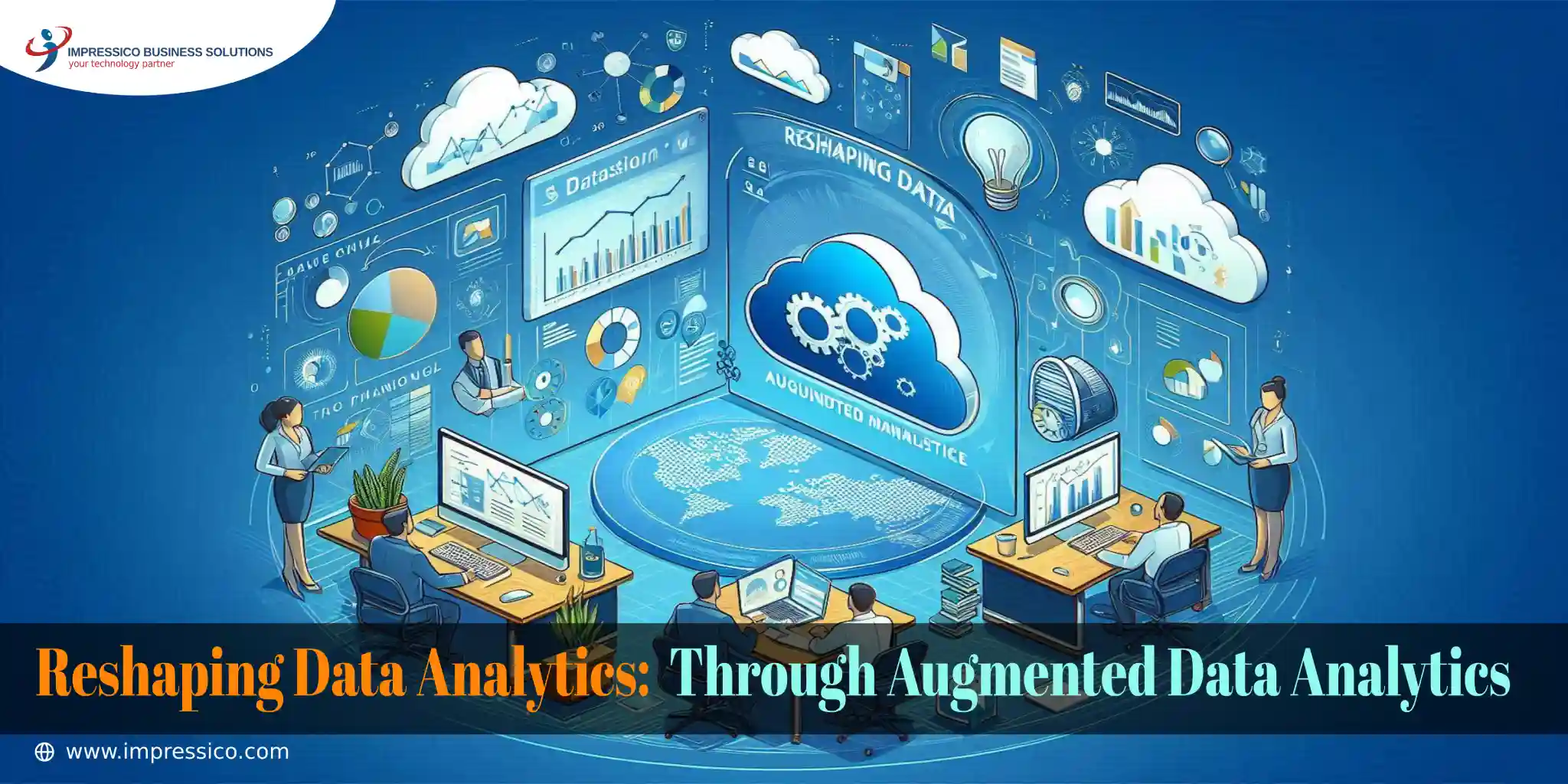Reshaping Data Analytics through Augmented Data Management

Modern organizations operating in a highly complex and dynamic business environment are increasingly realizing the importance of Big Data and its integral role in helping businesses make accurate business decisions. However, the huge amount of data available can be overwhelming at times, which can lead to difficulty in interpreting them to make informed decisions.
Survey by Forrester reveals that a minuscule 0.5% of all available data is analyzed and used. And in the context of organizational data, a mere 12% of data is utilized when making business decisions. The good news though is that augmented analytics of late has been picking up speed. According to IDC, the data generated by connected Internet of Things (IoT) devices will grow by leaps and bound from 13.6 zettabytes (ZB) in 2019 to 79.4 ZB by 2025.
Gigantic amount of data generated obviously will lead to heightened demand for augmented analytics. It is easier to understand since it will bring into play Artificial Intelligence (AI) and Machine Learning (ML) techniques to conduct better analysis and sharing of data. Increasing adaptation of augmented analytics could lead to higher efficiency and accuracy as far as deriving meaningful insight from data is concerned.
Organization to survive in a cutthroat marketplace must implement a data and technology-centric approach to Data Management. The latest and evolving trends possess the ability to transform an entire data management value chain.
How does your organization tackle data management challenges? What are the plans to deal with it? Did your organization adopt any of the new trends for managing data? Feel free to share your thoughts in the comments section.
[/vc_column_text]
Here we discuss in some detail what these emerging trends are and how their adaptation can benefit an organization.
-
AI-enabled Data Management
The amalgamation of the data management system with AI is important. When AI is implemented into the entire data management system, it can improve the entire data chain. AI-enabled data management enables task automation, which helps with repetitive and complex tasks, thus improving a business’s performance, accuracy, and productivity. According to Gartner, by the year 2022, automated data management will lead to around a 45% reduction in manual tasks.
Continuous Intelligence is a seamless AI-driven solution that allows companies to automatically seek data from a variety of sources and integrate them seamlessly. In conjunction with AI, ML, and the right training, it helps in keeping human intervention to a bare minimum.
-
Semantic Data Catalogue
As data is combined from different sources, it becomes a tad problematic to make efficient use of siloed data sources to effortlessly access, understand, and track data along with its history. Semantic Data catalogue makes use of knowledge graph model encoding a Semantic layer that maps relationships and describes the data in its business context while integrating data from disparate sources, thus helping businesses derive more meaningful information from the data.
-
NLP and Conversational Analytics
Until recently, the entire data analysis revolved around data visualisation, which required complex skillsets for accurate interpretation of data. However, with NLP/Conversational analytics, data analysis can be performed using NLQ search. By 2020, it is estimated that 50% of analytical queries will be automatically generated through natural language processing or voice.
-
Data Fabric
The Data is available in a variety of formats and is present in a variety of locations, including hybrid and multi-cloud. Data fabric provides a single environment for accessing, collecting, and analyzing data thereby increasing an organization’s agility by providing faster access to data. With the advancement in AI, ML, and data collection and storage methods, data storage and analysis are going ultra-fast transformation.
Modern organizations have to adopt the latest technologies to remain relevant. Organizations that are adopting the latest data analysis techniques are stealing a march over their competition when it comes to cost reduction, better insight, and more accurate decision making.
Conclusion
In the rapidly evolving business world, the mastery of Big Data through augmented analytics is not just an advantage—it’s a necessity. Organizations that leverage AI, ML, and the latest data management techniques are not only optimizing their operations but are also gaining a significant edge over competitors.
As data continues to grow exponentially, the ability to analyze and utilize this wealth of information will define the leaders of tomorrow. By adopting these cutting-edge technologies, businesses can ensure they make the most informed decisions possible, driving growth and success in an increasingly data-driven future. Let’s harness the power of data together and reshape the way we view analytics.
FAQs - Augmented Data Management
What role does Big Data play in modern business decisions?
Big Data is crucial for making informed and accurate business decisions, helping organizations navigate complex and dynamic environments.
How much data is currently being analyzed and used by organizations?
According to Forrester, only 0.5% of all data is analyzed and used, with organizations utilizing just 12% of their data for decision-making.
What is augmented analytics and its significance?
Augmented analytics uses AI and ML to enhance data analysis and sharing, leading to more efficient and accurate insights from the vast amounts of data generated.
How can AI-enabled Data Management benefit businesses?
AI-enabled Data Management automates tasks, improves performance, accuracy, and productivity, and is projected to reduce manual tasks by 45% by 2022.
What is a Semantic Data Catalogue?
It’s a system that uses a knowledge graph model to map relationships and describe data in a business context, integrating data from various sources for better insights.
What is Data Fabric and its advantages?
Data Fabric offers a unified environment for data access, collection, and analysis, increasing organizational agility and providing faster data access.
